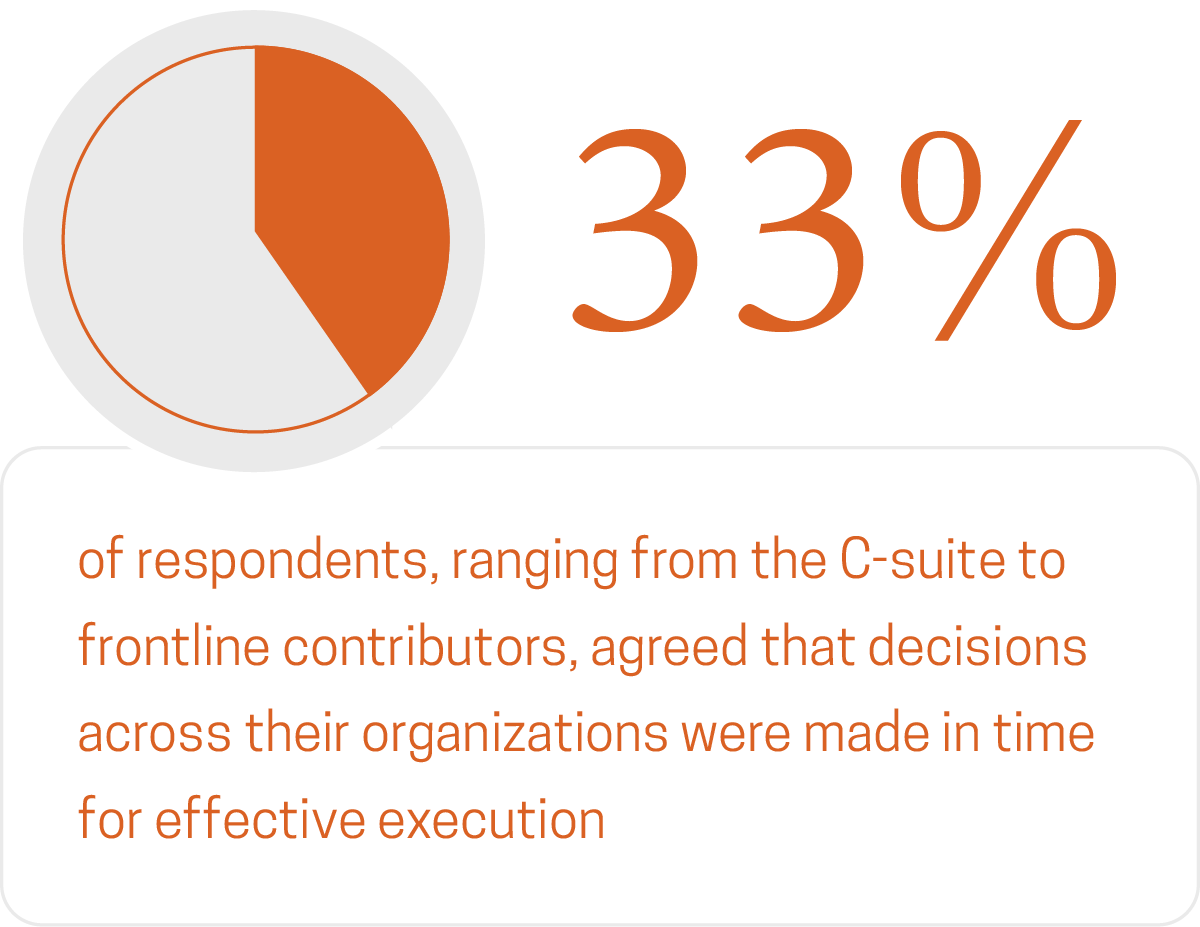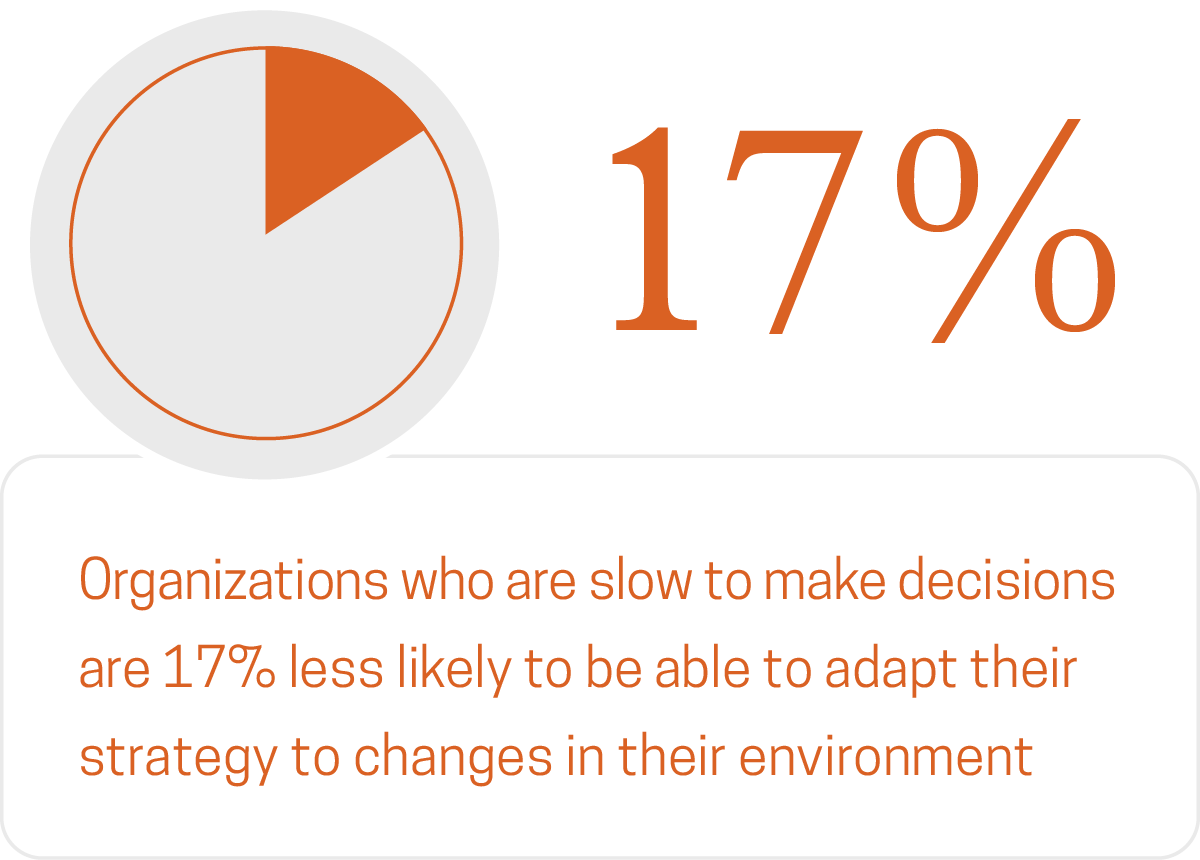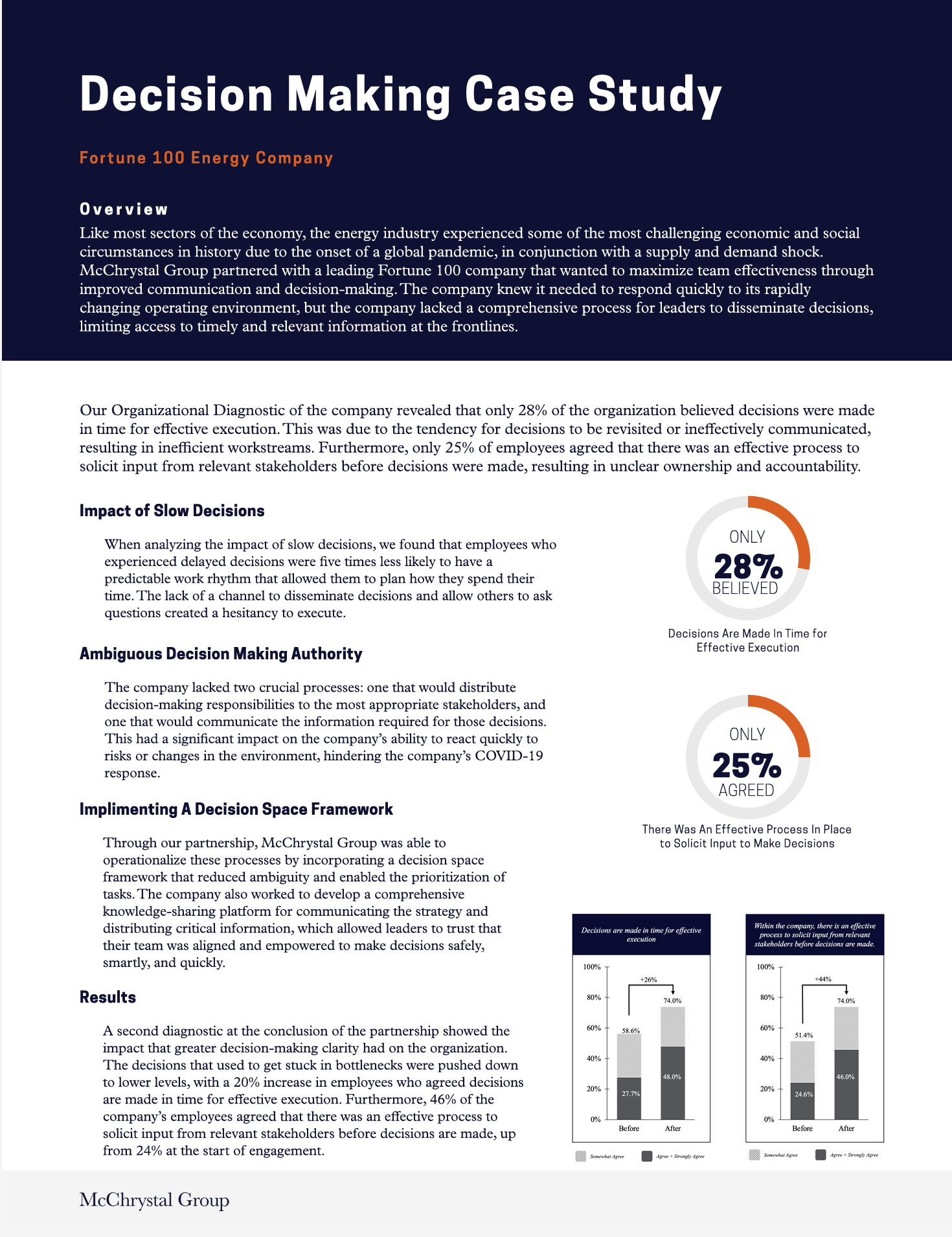When building an adaptable organization, leaders must make decision making a core competency to operate with strategic agility. Set your team up to execute with speed at scale and achieve your goals.
Today’s competitive environment demands speed and agility. An organization’s ability to execute an effective decision-making process that spans all levels of the organization ensures it can adapt quickly to the evolving and uncertain environment, outperform its competition, and continue to engage its workforce.
Effective decision-making requires clear decision space – meaning that every team member must feel empowered to make decisions in their own sphere of influence and understand the wider impact of those decisions. While leaders often think they’re empowering their teams to make decisions independently, our data show a distinct gap between perception and reality. Through our Organizational Diagnostic tool, we’ve collected data from more than 50,000 individuals across hundreds of cross-industry teams. Our analysis shows that only half of employees agree that “leadership in my organization respects decisions their team makes.” Such a finding indicates that teams are not effectively empowered to make decisions and have those decisions honored and executed.
It is not enough to tell team members that they have decision-making authority if their decisions, once made aren’t respected by leaders. This trend results in wasted time, and angry or apathetic team members. Additionally, our research has found that teams closest to the frontline have the lowest agreement that leaders respect their decisions, which negatively impacts both the customer and team member experience.
Leaders take notice – such team empowerment is an important contributor to an employee’s long-term motivation and engagement. When we fail to execute an effective decision making process that empowers teams in the right way, teams will fall short of maximum performance and talent retention will evade us — costly mistakes that many businesses can’t afford.
But it’s not just a lack of empowerment that can negatively impact engagement; team engagement is also affected by the speed and timeliness of the decisions made by leaders above them. Through our work with executives and management teams, we’ve observed that leaders often approach decision making in ways that limit operational flexibility for those on the frontlines or force mid-level managers to pick up the slack when the follow-through of a decision has been poorly planned and communicated.
According to our data, only 33% of respondents agreed that decisions across their organizations were made in time for effective execution. The reason for this slow decision-making was often attributed to poor information-sharing.
Further, only 47% of employees across industries agreed that they received timely input from the right decision makers necessary to do their job. Without a reliable process for receiving timely information, the teams that are further away from leadership lack the context needed to implement changes in real-time. The result is teams and managers that are constantly fighting fires rather than focusing on the big decisions that will drive the achievement of strategic goals.


33% of respondents, ranging from the C-suite to frontline contributors, agreed that decisions across their organizations were made in time for effective execution.
Organizations who are slow to make decisions are 17% less likely to be able to adapt their strategy to changes in their environment.
So, what can leaders do to address these commonly encountered decision-making problems?
To optimize the decision-making environment, consider the following tactics for introducing speed and clarity into your decision-making process:
- Assess your organization’s current decision-making process: Leaders should first understand what’s working and what’s not. Analyze relevant data from your engagement survey. At a team huddle or while walking the front line, ask employees specific questions about their understanding of decisions made and their ability to make decisions. Assess the gaps in your organization’s decision-making process.
- Define decision authority at each level of leadership: Employ a Decision Space Framework, which creates boundaries around who is making specific types of decisions, who is responsible for providing a recommendation on a given decision, and, where appropriate, cross-functional input is necessary.
- Manage information: One of the challenges of timely decision-making is filtering the influx of information to only the most pertinent. Leaders need relevant information from their teams to make good decisions, and teams need to understand what information is (and is not) needed. To make this process smooth and effective, establish Critical Information Requirements (CIRs) that identify which information is most critical to the leader. By creating a short list of time-sensitive data for decision-makers, subordinates are protected from unknowingly failing to provide information they did not realize was crucial.
- Simplify decision-making to empower teams: The best teams employ Simple Rules, which guide decision-making so it’s quicker, easier, and more consistent. These simple rules are particularly useful when navigating turbulent times. Two types of simple rules are Boundary Rules, which limit the number of options someone has for a decision (i.e. fewer choices mean an easier decision), and Prioritizing Rules, which clearly convey the order of importance when there is a time or resource constraint (i.e. prioritizes actions)
In today’s complex and constantly changing environment, leaders must continuously track and refine their decision-making practices to help teams plan, coordinate, and adapt quickly while keeping teams feeling empowered and engaged Without a process for making and communicating timely decisions, leaders run the risk of creating a culture of ambiguity for their employees, thus constraining their ability to respond to strategic changes with agility. With the correct processes in place, decisions will be made with real-time information, inclusive of the right stakeholders, and provide the focus necessary to continue executing against the organization's strategy with a highly engaged workforce.



